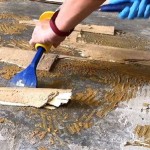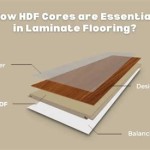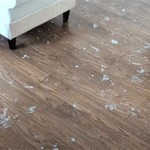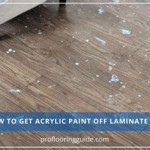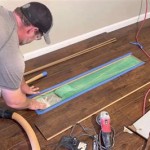Best Wood Floors For Dogs And Water: A Comprehensive Guide
Choosing the right flooring for a home with dogs, particularly in areas prone to moisture, requires careful consideration. The ideal flooring material should withstand the rigors of canine activity, including scratches, accidents, and regular cleaning, while also being water-resistant to prevent damage from spills and tracked-in moisture. This article examines various wood flooring options, analyzing their suitability for homes with dogs and their ability to resist water damage.
Hardness Matters: Selecting Durable Wood Species
The Janka hardness scale measures the resistance of wood to indentation. A higher Janka rating indicates a harder, more durable wood. For homes with dogs, selecting wood species with a higher Janka rating is crucial to minimizing scratches and dents. Commonly used flooring woods range significantly in their hardness.
Softwoods, such as pine and fir, are generally not suitable for homes with dogs due to their susceptibility to scratches and dents. While visually appealing, these woods are easily marred by dog nails and everyday foot traffic. Maintaining their appearance requires frequent refinishing, which can be costly and time-consuming.
Harder wood species, like oak (red and white), maple, hickory, and Brazilian Cherry, offer better resistance to scratches and dents. Oak is a popular choice due to its relative hardness, affordability, and availability. White oak is slightly harder and more water-resistant than red oak, making it a superior option for homes with dogs and potential moisture exposure. Maple is a very hard wood species with a smooth, consistent grain pattern, but can show scratches more readily than oak if not properly finished. Hickory is one of the hardest domestic wood species and provides excellent durability against dog nails and heavy traffic. Exotic hardwoods, such as Brazilian Cherry (also known as Jatoba), are exceptionally hard and resist damage effectively, but are typically more expensive and can have environmental implications related to sourcing and sustainability.
The choice of wood species should be based on a balance between durability, aesthetics, and budget. Investing in a harder wood species initially can save money in the long run by reducing the need for frequent repairs and refinishing.
Engineered Wood vs. Solid Hardwood: Navigating Water Resistance
The construction of wood flooring significantly impacts its water resistance. Solid hardwood is a single piece of wood from top to bottom. While aesthetically pleasing and durable, solid hardwood is susceptible to expansion and contraction with changes in humidity and moisture levels. This can lead to warping, cupping, and gapping, especially in areas with high moisture exposure. Water spills and pet accidents can easily penetrate solid hardwood, causing permanent damage if not addressed promptly.
Engineered wood flooring consists of multiple layers of wood veneer glued together. The top layer is a veneer of the desired hardwood species, while the core layers are typically made of plywood or high-density fiberboard (HDF). This multi-layered construction makes engineered wood more dimensionally stable than solid hardwood, meaning it is less prone to expansion and contraction with changes in moisture. Engineered wood can better withstand spills and humidity fluctuations, making it a more suitable option for homes with dogs and potential water exposure.
The thickness of the top veneer layer in engineered wood flooring is also a crucial factor. A thicker veneer allows for more refinishing opportunities, extending the lifespan of the flooring. However, even with a thick veneer, excessive water exposure can still damage the underlying core layers of engineered wood. Therefore, selecting an engineered wood floor with a water-resistant core is essential for homes with dogs and a higher risk of spills.
Some engineered wood flooring products are specifically designed with waterproof cores. These cores are typically made of materials like plastic or a modified wood composite that is impervious to water. While these options provide superior water resistance, it is important to note that even waterproof flooring can be damaged if water seeps in through the seams or around the edges. Proper installation and maintenance are crucial for ensuring the long-term performance of any type of wood flooring in a moisture-prone environment.
Finishing and Sealing: Enhancing Protection Against Scratches and Moisture
The type of finish applied to wood flooring plays a significant role in its resistance to scratches, stains, and water damage. Polyurethane finishes are a popular choice due to their durability and water resistance. Oil-based polyurethane finishes provide a warm, amber hue and excellent protection, but they can yellow over time. Water-based polyurethane finishes are more clear and offer better resistance to yellowing, but may require more coats to achieve the same level of protection as oil-based finishes.
Aluminum oxide finishes are another option for wood flooring. Aluminum oxide is a very hard mineral that is infused into the finish to enhance its scratch resistance. These finishes are typically used on prefinished wood flooring and offer excellent durability. However, they can be difficult to repair if scratched or damaged.
Penetrating oil finishes, such as tung oil or linseed oil, penetrate the wood pores and harden to provide a natural-looking finish. These finishes are less durable than polyurethane finishes but are easier to repair. They also require regular maintenance with oil-based refreshers to maintain their water resistance.
For homes with dogs and a concern for water exposure, it is important to select a finish that provides a durable, water-resistant barrier. Applying multiple coats of a high-quality finish is recommended, paying close attention to the manufacturer's instructions. Regular maintenance, including sweeping and mopping with appropriate cleaning products, is also essential for preserving the finish and preventing water damage.
Sealing the edges and seams of wood flooring can provide an additional layer of protection against water intrusion. Using a waterproof sealant around the perimeter of the room and in areas prone to spills, such as near water bowls and entryways, can help prevent water from seeping underneath the flooring and causing damage.
Additionally, preventative measures such as placing mats at doorways to trap water and mud from dogs’ paws can drastically reduce the amount of moisture tracked onto the wood floors. Promptly cleaning up spills and pet accidents is also crucial for preventing water damage and stains.
In summary, selecting the best wood flooring for homes with dogs and potential water exposure requires a holistic approach. Choosing a hard wood species, considering engineered wood construction with a water-resistant core, and applying a durable, water-resistant finish are all important factors. With careful planning and diligent maintenance, it is possible to enjoy the beauty of wood flooring while protecting it from the rigors of canine companionship and the risks of water damage.
The cost of materials and installation can vary widely depending on the type of wood, construction method, and finish chosen. It is advisable to obtain quotes from multiple flooring contractors and compare the pros and cons of each option before making a final decision. Furthermore, consulting with a flooring professional can provide valuable insights and personalized recommendations based on the specific needs and circumstances of the home.
Beyond the practical considerations of durability and water resistance, the aesthetic appeal of wood flooring is also an important factor for homeowners. Wood flooring comes in a wide variety of colors, grain patterns, and finishes, allowing homeowners to find an option that complements their existing décor and personal style. Considering the long-term investment and the impact on the overall look and feel of the home, it is essential to choose a wood flooring option that is both functional and visually appealing.
Finally, responsible pet ownership plays a significant role in protecting wood flooring. Regular grooming, including nail trimming, can help minimize scratches. Training dogs to avoid scratching or chewing on the flooring can also prevent damage. By combining responsible pet care with the right flooring choice and proper maintenance, homeowners can enjoy beautiful and durable wood floors for years to come.

How To Choose The Best Flooring For Dogs Home

How To Choose The Best Flooring For Dogs Home

Pet Proof Wood Flooring Guide Dog Friendly Hardwood Floors

How To Choose The Best Flooring For Dogs Home
Dog Friendly Floors Floor Decor Blog

What Is The Best Flooring For Pets Pet Friendly Guide

Flooring Protection From Dog S Water And Food Bowls Twenty Oak

What Flooring Is Best For Dogs

Choosing The Best Hardwood Floors For Dogs And Cats Carlisle Wide Plank

Porcelain Wood Look Tile Vs Luxury Vinyl Plank An Honest Comparison
See Also


